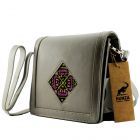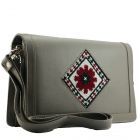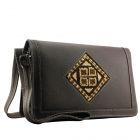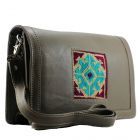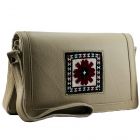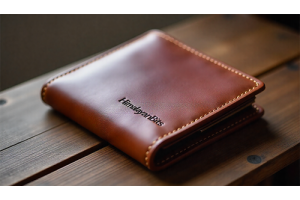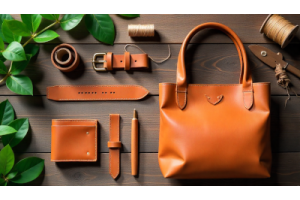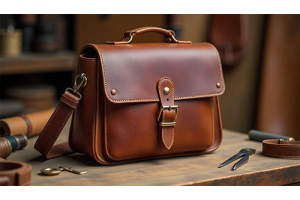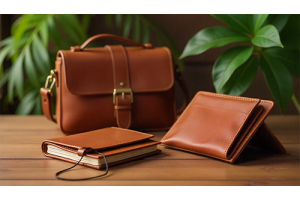A hunza Leather Artisan’s Daily Craft
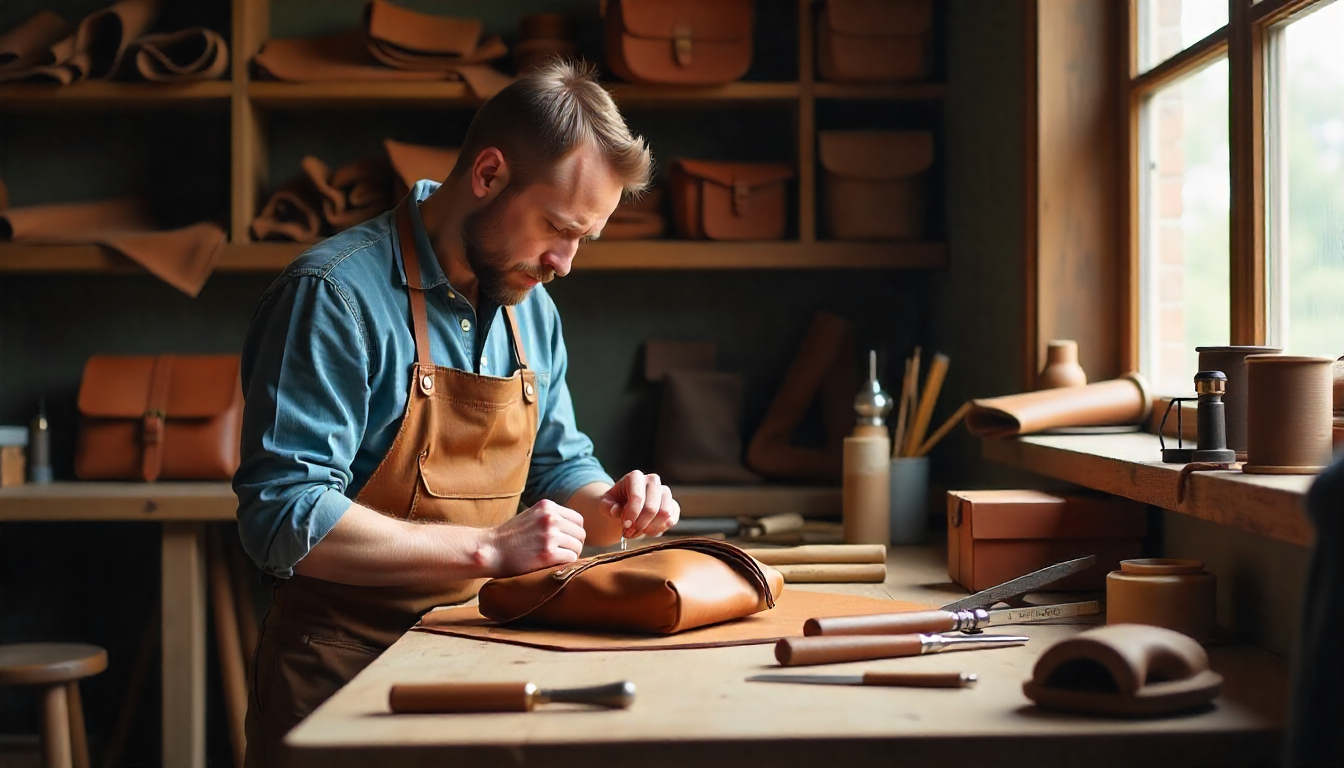
A British Leather Artisan’s Daily Craft
Step into the world of traditional craftsmanship, where every stitch and cut tells a story. British leather artisans dedicate their days to transforming raw hides into timeless, handcrafted pieces. From selecting the finest materials to meticulously shaping and finishing each product, their work blends skill, patience, and creativity. This is more than a job—it’s a daily ritual of precision and passion, preserving a centuries-old tradition while producing functional art.
- 1. Introduction – A Glimpse into a Leather Artisan’s World
- 2. Selecting the Finest Leather and Tools
- 3. Traditional Techniques and Craftsmanship
- 4. A Day in the Workshop
- 5. Challenges and Rewards of Leather Crafting
- 6. Sustainability in Leatherwork
- 7. Creating Timeless, Functional Pieces
- 8. Conclusion – Preserving a Heritage Craft
- 9. FAQs
1.Introduction – A Glimpse into a Leather Artisan’s World
Leather crafting is more than just making bags or accessories—it’s a blend of tradition, skill, and passion. In Britain, leather artisans dedicate their lives to perfecting every cut, stitch, and finish, turning raw materials into timeless pieces that combine beauty and durability. This world is defined by meticulous attention to detail, patience, and a love for the craft, where every item tells a story of craftsmanship passed down through generations.
- Leather crafting blends tradition, skill, and creativity.
- British artisans carefully select and prepare high-quality materials.
- Each stitch and cut is done with precision and attention to detail.
- The craft combines functionality with timeless style.
- Artisans preserve a centuries-old heritage while producing modern, durable pieces.
- Every handcrafted item tells a story of dedication and passion.
Tip
Focus on storytelling and sensory details. Start by painting a vivid picture of the artisan’s environment—the feel of supple leather, the rhythmic sound of tools, the scent of tanned hides. Highlight the craftsmanship, patience, and passion involved, giving readers a sense of the dedication behind each piece. You can also hint at the value and uniqueness of handmade leather goods to immediately engage interest.
2.Selecting the Finest Leather and Tools
Focus on quality, precision, and the artisan’s expertise. Explain how the type of leather (full-grain, vegetable-tanned, etc.) affects durability, texture, and aging. Highlight the importance of choosing the right tools—from knives and needles to stitching awls—and how each contributes to the craftsmanship. Use concrete details to make readers appreciate that every decision in materials and tools impacts the final product’s quality and longevity.
Selecting the Finest Leather and Tools
- Choosing premium leather like full-grain or vegetable-tanned ensures durability, natural texture, and long-lasting quality.
- Evaluating leather quality by checking consistency, thickness, and suppleness helps select the best material.
- Essential tools such as precision knives, stitching awls, needles, and edge tools are crucial for flawless craftsmanship.
- Attention to detail in selecting materials and tools ensures each piece reflects care, skill, and longevity.
- Experienced artisans know how to match tools with leather to achieve perfect cuts, stitches, and finishes.
Style Meets Functionality
In the world of leather craftsmanship, a bag isn’t just about looks—it’s about how well it works for everyday life. Style meets functionality when design balances elegance with practicality. Every pocket, strap, and detail is thoughtfully created to make carrying essentials effortless while maintaining a timeless, sophisticated appearance.
- Combines elegance with practical design for everyday use.
- Thoughtfully placed pockets and compartments keep essentials organized.
- Durable straps and materials ensure comfort and longevity.
- Timeless style allows the bag to complement any outfit.
- Every detail is crafted to balance beauty with usability.
| Feature | Benefit |
|---|---|
| Elegant Design | Complements any outfit while maintaining a sophisticated look. |
| Practical Compartments | Keeps essentials organized and easily accessible. |
| Durable Materials | Ensures comfort, longevity, and daily usability. |
| Thoughtful Details | Balances beauty with functional design. |
advantages of Style Meets Functionality:
When a bag perfectly blends style with practicality, it offers more than just a pretty appearance—it enhances daily life. From organized compartments to durable materials and timeless design, these advantages make a bag both functional and fashionable, proving that good design doesn’t have to compromise usability.
- Combines fashion and practicality, making the bag suitable for everyday use.
- Keeps essentials organized with thoughtfully designed compartments.
- Durable construction ensures the bag lasts for years.
- Comfortable to carry thanks to ergonomic straps and lightweight design.
- Timeless style ensures it complements any outfit and occasion.
- Attention to detail reflects craftsmanship and quality in every piece.
| Advantage | Benefit |
|---|---|
| Fashionable Design | Enhances your style while remaining versatile for any occasion. |
| Organized Compartments | Keeps belongings neatly arranged and easy to access. |
| Durable Construction | Ensures long-lasting use and reliable performance. |
| Comfortable Carry | Ergonomic straps and lightweight design make it easy to carry daily. |
| Timeless Style | Remains stylish over the years, complementing any outfit. |
| Attention to Detail | Reflects high-quality craftsmanship and premium finish. |
Introduction for benefits
A well-designed leather bag does more than look good—it makes everyday life easier. Combining style with practicality, it keeps your essentials organized, offers lasting durability, and provides comfort while carrying. These benefits show how thoughtful craftsmanship turns a simple accessory into a versatile, long-lasting companion.
Introduction – Benefits and Advantages of Style Meets Functionality
- Keeps essentials organized with practical compartments.
- Durable materials ensure long-lasting use.
- Comfortable to carry with ergonomic design.
- Timeless style complements any outfit.
- Reflects high-quality craftsmanship and attention to detail.
3. Traditional Techniques and Craftsmanship
Leather craftsmanship is more than a skill—it is a tradition passed down through generations, where every step is guided by experience and precision. From selecting the finest hides to hand-cutting patterns and stitching each piece with care, artisans ensure that every bag meets the highest standards of quality. Traditional techniques, such as hand-stitching, edge finishing, and natural tanning, not only enhance durability but also bring out the leather’s natural beauty, giving each item a unique character. This meticulous process reflects a deep respect for the material and a dedication to producing functional, elegant, and long-lasting pieces. By combining artistry with practicality, traditional craftsmanship transforms simple leather into timeless works that improve with age and tell a story of heritage, skill, and attention to detail.
Traditional Techniques and Craftsmanship
- Leather craftsmanship is a time-honored tradition passed down through generations.
- Artisans carefully select the finest hides for quality and durability.
- Hand-cutting patterns and meticulous stitching ensure precision and longevity.
- Traditional techniques like natural tanning and edge finishing enhance the leather’s beauty and character.
- Every piece reflects skill, attention to detail, and respect for the material.
- Combining artistry with practicality, craftsmanship creates functional, elegant, and timeless leather goods.
- Each item improves with age, carrying a story of heritage and dedication.
| Technique / Aspect | Benefit |
|---|---|
| Generational Craftsmanship | Preserves traditional skills and ensures high-quality leatherwork. |
| Careful Leather Selection | Provides durability and enhances the natural beauty of the leather. |
| Hand-Cutting and Stitching | Ensures precision, strength, and long-lasting construction. |
| Natural Tanning & Edge Finishing | Enhances texture, character, and elegance of each piece. |
| Attention to Detail | Combines artistry with practicality for functional, elegant products. |
| Timeless Design | Creates pieces that improve with age and reflect heritage. |
4. A Day in the Workshop
Stepping into a leather workshop is like entering a world where tradition, skill, and creativity converge. Each day begins with careful preparation of materials and tools, followed by the rhythmic process of cutting, stitching, and finishing leather pieces. Observing artisans at work reveals the patience, precision, and dedication required to transform raw hides into beautifully crafted, functional bags. A day in the workshop offers a glimpse into the meticulous process behind every detail, highlighting the artistry and passion that go into creating timeless leather goods.
- The day starts with selecting and preparing the finest leather and essential tools.
- Artisans carefully cut patterns and pieces with precision and attention to detail.
- Hand-stitching and assembly bring each leather piece to life with durability and style.
- Finishing touches like edge polishing and hardware installation enhance both function and elegance.
- The workshop reflects a blend of tradition, skill, and creativity in every step.
- Each day highlights the patience and dedication required to craft timeless leather goods.
| Activity | Details / Benefit |
|---|---|
| Material Preparation | Selecting and preparing the finest leather and essential tools. |
| Cutting | Careful cutting of patterns and pieces with precision and accuracy. |
| Hand-Stitching & Assembly | Brings each leather piece to life, ensuring durability and style. |
| Finishing Touches | Polishing edges and installing hardware for elegance and functionality. |
| Workshop Atmosphere | Reflects tradition, skill, and creativity in every step. |
| Artisan Dedication | Highlights patience and passion required to craft timeless leather goods. |
5. Challenges and Rewards of Leather Crafting
Leather crafting is a delicate balance of patience, skill, and creativity. While working with raw hides and intricate tools presents challenges—such as mastering precise stitching, handling tough materials, and maintaining consistent quality—the rewards are equally profound. Each finished piece reflects hours of dedication, expert craftsmanship, and attention to detail. Beyond creating durable, functional, and beautiful leather goods, artisans gain a sense of pride and fulfillment, knowing their work carries tradition, artistry, and timeless value.
- Working with raw hides requires skill to handle varying textures and thicknesses.
- Mastering precise cutting, stitching, and finishing takes patience and practice.
- Maintaining consistent quality across every piece can be challenging.
- Each finished product reflects hours of dedication and expert craftsmanship.
- Artisans take pride in creating durable, functional, and beautiful leather goods.
- Leather crafting preserves tradition and showcases timeless artistry.
- The reward is a product that combines practicality, elegance, and lasting value.
Why It Matters:
Understanding the value of high-quality leather craftsmanship goes beyond aesthetics. Every carefully selected material, precise stitch, and thoughtful design contributes to a product that is durable, functional, and timeless. Investing in well-made leather goods supports skilled artisans, preserves traditional techniques, and ensures that each piece can be enjoyed for years. It matters because quality craftsmanship transforms ordinary items into lasting, meaningful possessions that combine beauty, practicality, and heritage.
- High-quality materials and craftsmanship ensure durability and longevity.
- Thoughtful design combines functionality with timeless style.
- Supports skilled artisans and preserves traditional techniques.
- Transforms ordinary items into meaningful, lasting possessions.
- Reflects attention to detail, quality, and heritage in every piece.
| Reason | Explanation |
|---|---|
| Durability and Longevity | High-quality materials and craftsmanship ensure products last for years. |
| Functionality and Style | Thoughtful design balances practicality with timeless elegance. |
| Support for Artisans | Purchasing well-made leather goods helps preserve traditional skills and techniques. |
| Meaningful Possessions | Transforms everyday items into cherished, long-lasting pieces. |
| Attention to Detail | Reflects quality, heritage, and dedication in every crafted piece. |
6. Sustainability in Leatherwork
Sustainability is becoming a cornerstone of modern leathercraft, blending traditional techniques with environmentally conscious practices. From sourcing vegetable-tanned hides to minimizing waste and using eco-friendly finishes, artisans are finding ways to reduce their environmental impact without compromising quality. Sustainable leatherwork not only protects the planet but also promotes ethical practices, supports responsible sourcing, and ensures that every piece is crafted with care for both people and the environment.
- Uses vegetable-tanned hides and eco-friendly materials to reduce environmental impact.
- Minimizes waste through careful cutting and efficient production techniques.
- Supports ethical practices and responsible sourcing of leather.
- Combines traditional craftsmanship with modern sustainability efforts.
- Ensures each piece is crafted with care for both people and the planet.
| Aspect | Benefit |
|---|---|
| Vegetable-Tanned Hides | Reduces environmental impact while maintaining high-quality leather. |
| Efficient Production | Minimizes waste through careful cutting and resource management. |
| Ethical Sourcing | Supports responsible practices and fair treatment of workers. |
| Eco-Friendly Finishes | Ensures safer, sustainable processing without harmful chemicals. |
| Blending Tradition with Sustainability | Maintains craftsmanship while prioritizing environmental responsibility. |
7. Creating Timeless, Functional Pieces
The true mark of exceptional leathercraft lies in creating pieces that are both timeless and functional. Every design decision, from selecting premium leather to incorporating practical features, aims to balance elegance with everyday usability. These pieces are crafted to withstand daily wear while maintaining their style, ensuring that each item remains a reliable and cherished accessory for years to come. By combining durability, thoughtful design, and classic aesthetics, artisans transform simple leather into enduring works of art that stand the test of time.
- Combines elegance with practicality for everyday use.
- Uses premium leather and durable materials for long-lasting quality.
- Incorporates thoughtful features like organized compartments and sturdy straps.
- Maintains classic design that never goes out of style.
- Balances functionality with timeless aesthetics, creating cherished accessories.
- Each piece is crafted to withstand daily wear while remaining stylish.
| Feature | Benefit |
|---|---|
| Elegant Design | Combines style with practicality for everyday use. |
| Premium Materials | Durable leather and quality components ensure long-lasting performance. |
| Thoughtful Features | Organized compartments and sturdy straps enhance usability. |
| Timeless Aesthetics | Classic design keeps the piece stylish for years. |
| Balanced Functionality | Creates accessories that are both practical and visually appealing. |
| Daily Durability | Withstands everyday use while maintaining elegance. |
Conclusion – Preserving a Heritage Craft
Leather craftsmanship is more than just making bags—it is a celebration of tradition, skill, and artistry. Every carefully selected hide, precise stitch, and thoughtfully designed feature reflects generations of knowledge and dedication. By investing in high-quality leather goods, we support artisans, preserve time-honored techniques, and ensure that these heritage crafts continue to thrive. The beauty of a well-crafted leather piece lies not only in its elegance and functionality but also in the story it tells—a story of passion, tradition, and enduring value.
FAQs
1. What does a typical day look like for a British leather artisan?
A typical day involves selecting premium leather, cutting patterns, hand-stitching pieces, assembling components, and finishing edges to ensure durability and elegance.
2. What tools are essential for leather crafting?
Essential tools include precision knives, stitching awls, needles, edge finishing tools, and sometimes specialized presses or stamps for detailing.
3. How long does it take to create a single leather bag?
The time varies depending on design complexity, but a handmade bag typically takes several hours to a few days to complete, ensuring high quality at every step.
4. Why is hand-stitching preferred over machine stitching?
Hand-stitching allows greater precision, strength, and durability, while giving each piece a unique artisan touch that machines cannot replicate.
5. How do artisans choose the best leather for a project?
They assess leather type, thickness, suppleness, texture, and tanning method to match the material to the intended use and design of the product.
6. What challenges do leather artisans face daily?
Challenges include working with tough or inconsistent hides, maintaining precision in stitching, meeting deadlines, and ensuring consistent quality across products.
7. How do artisans maintain sustainability in their craft?
They use vegetable-tanned hides, minimize waste, select eco-friendly finishes, and follow ethical sourcing practices to reduce environmental impact.
8. What makes British leather craftsmanship unique?
It combines traditional techniques passed down through generations with attention to detail, high-quality materials, and a commitment to durability and style.
9. How do artisans balance style and functionality?
By designing thoughtfully, incorporating practical compartments, ergonomic straps, and timeless aesthetics, they create pieces that are both beautiful and useful.
10. Why is preserving traditional leather techniques important?
Preserving these techniques safeguards heritage skills, supports artisans, and ensures the creation of timeless, high-quality leather goods for future generations.

